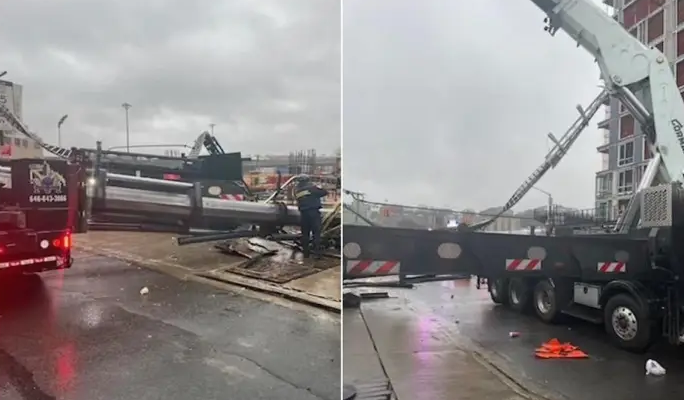While there is a bit of a pause in the construction development activity these days, there is some recent news out of New York and Texas regarding crane safety.


Tuesday, January 9th, a crane collapsed in Manhattan injuring five people. According to the FDNY, four of the victim’s injuries were described to be minor, and one person was left with serious, but not life-threatening injuries. https://gothamist.com/news/5-injured-in-manhattan-crane-collapse-fdny-says
In regards to the Texas Crane Collapse of 2019, a Dallas jury has awarded more than $860 Million to the family of one of the victims of the collapse.
This is a solemn reminder of how important proper safety and controls are on any project, particularly, when it involves a [Tower] Crane.
This is a “nuclear” verdict that will, surely, be appealed but does emphasize the severity of the fall out that can come from a catastrophic event such as crane collapse.
https://www.enr.com/articles/56365-dallas-jury-awards-more-than-860m-in-crane-collapse-case
OSHA is acutely aware of the issues with proper crane setup and operation and issues violations on a regular basis. This is a link to the top ten violations of 2020 to give you an idea of the most frequent and severe ones.
In addition to the obvious liability of a crane collapse, there is also the risk-of-loss (for the crane itself) and the Delay-in-Startup (“DSU”) that will affect the project. Since the crane is not a permanent part of the building, there is a very good chance the Builders Risk coverage will not respond to either the direct damage or, more materiality, the DSU for the project. Some of you may remember the crane dangling from Extell’s West 57th Street Project in 2012 and the contentious litigation that ensued related to coverage – here is a summary to refresh your memory. https://www.nycourts.gov/reporter/3dseries/2017/2017_01141.htm
The message is clear, construction and development projects can be fraught with risk, and anticipating and managing that risk methodically from the start will allow a Project Owner and the construction team to understand “what can go wrong, what will be the impact, and what can they do about it”. It is, really, a simple way to think about risk and is the basis of any Enterprise Risk Management process.
The ALS Group advises on many construction and development projects for owners and developers (only), and we feel confident that with the proper planning and risk mitigation, a project owner will be in a better position to withstand project risks and the effect they may have on the project’s outcome.
If you need more information on any of the topics covered in this blog, or need help with any risk related issues, please contact Albert Sica, Managing Principal, at 732.395.4251 or asica@thealsgroup.com.


